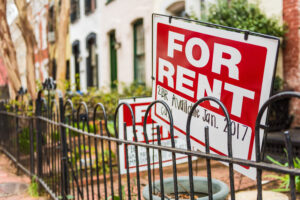Working on your rental’s landscaping is important to attracting new tenants, but you don’t want to invest too much time and money on your curb appeal every year. Incorporate plants that are low-maintenance and will last through the seasons now! You’ll see the difference for years to come.
Local Plants Can Easily Adjust to Your Rental
If you’ve ever planted a bush, you’ll know that within the first week you can visibly tell if it’s is adjusting well or not. There are few factors that go into this—soil, placement, and water—but when it comes to landscaping, one of the biggest ones is the plant itself. Plants that are grown locally are already adjusted to your property’s climate and soil. So when you go to your local hardware store or nursery, ask them about what greenery thrives in your area. By using trees, shrubs, and flowers that are grown locally and are known to thrive in your rental’s area, you can pretty much expect these plants to grow on their own. Instead of spending time and money planting finicky flowers like azaleas on your rental (just to find that they’re dead in a few weeks) do your research. You’ll save time and money in the end.
Buy Plants with a Purpose
In addition to local plants, you should seek out greenery that grows with a purpose. These plants can be low-cost, low-maintenance, drought resistant, or fire resistant. You’ll need to go to your nursery or local hardware store get some insider information on if these particular plants thrive in your area, however if not these examples, then you should be able to find another local plant.
Low-Maintenance
For the most part, these plants are pretty low-maintenance. They thrive in high sun to medium shade and follow a typical “water once a week” routine.
- Velvet Cloak Smoke Tree
- Perennials like the Ruffled Velvet Siberian Iris
- Thornless Common Honeylocust
Low-Water and Drought Resistant
Conserving water is not only important for your water bill, but for the environment as well. If you tend to forget to water specific plants, or want to cut down on how often you water your property’s front yard, these are for you.
- Nassella Tenuissima
- Succulents like the Cape Blanco
- Lavandula Multifida (a type of Lavender)
Fire Resistant
With fire season well on its way, consider using fire resistant plants in your landscaping. Additionally, place the vegetation according to fire-safety regulations to protect your property.
- Sage
- Lavandula Dentata (also known as French Lavender)
- Wild Strawberry
Be Conscious of Wildlife, Especially Gophers
While working on your landscaping, you’ll want to be aware of any wildlife that could destroy all your hard work. Gophers in particular are notorious for eating new plants, which, like Bill Murray in Caddyshack, can drive you insane trying to combat. If you have a gopher problem wire baskets and gopher traps are always available and have a higher success rate than gopher resistant plants. While gopher resistant plants do exist (like lavender, heavenly bamboo, and rosemary), these plants are simply inedible to the gopher and will do nothing to stop them from tunneling. Additionally, a gopher’s tunneling can not only destroy your lawn, but your all of your plant’s roots as well. Ultimately, whether you’re dealing with gophers, deer, rabbits, snakes, lizards, or any other wildlife, be aware of what these animals can do to your curb appeal.
By putting a mix of local, purposeful plants, you set your curb appeal up for future success. Not only are you mindful of water intake, fire protection, and overall landscape maintenance, but the sustainability of your hard efforts, which tenants will definitely notice. As long as you stay away from invasive plants (like chamomile, mint, and violet) and be aware of wildlife on your property, your curb appeal is fail proof.
What are your favorite plants to put in your landscaping? Are there any plants in your rental’s area that only thrive there? Let us know in the comments section below and be sure to subscribe!







